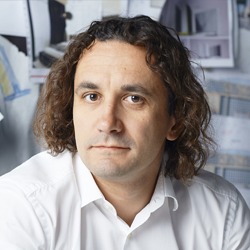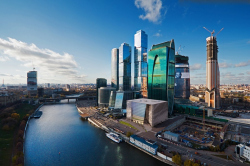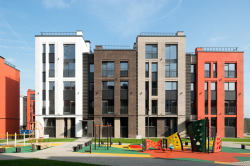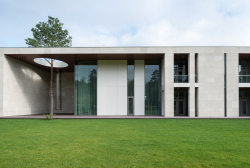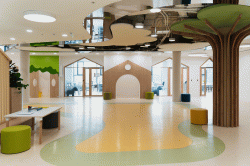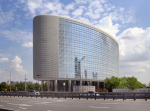Buildings and Projects:
Mixed-use development УEmpire TowerФ. Second stage.
Russia, MoscowResidential complex “Dutch Quarter”
Russia, IvanteevkaBuildings and Projects Shown: 4
Archi.ru Texts:
24.10.2025
Elena Petukhova. Garden of Knowledge
UNK architects and UNK design created the interiors of the Letovo Junior campus, working together with NF Studio, which was responsible for developing the educational technology that takes into account the needs and perception of younger and middle school children.04.09.2025
Elena Petukhova. Perpetuum Mobile
The interior of the headquarters of Natsproektstroy, created by the IND studio team, vividly and effectively reflects the clientТs field of activity Ц it is one of RussiaТs largest infrastructure companies, responsible for logistics and transport communications of every kind you can possibly think of.05.05.2025
Julia Tarabarina. In Orbit of Moscow City
The Orbital business center is both simple and complex. Simple in its minimalist form and optimal office layout solution: a central core, a light-filled façade, plenty of glass; and from the unusual side Ц a technical floor cleverly placed at the buildingТs side ends. Complex Ц well, if only because it resembles a celestial body hovering on metallic legs near Magistralnaya Street. Why this specific shape, what it consists of, and what makes this УboutiqueФ office building (purchased immediately after its completion) so unique Ц all of this and more is covered in our story.21.03.2025
Julia Tarabarina. Daring Brilliance
In this article, we are exploring УNew VisionФ, the first school built in the past 25 years in MoscowТs Khamovniki. The building has three main features: it is designed in accordance with the universal principles of modern education, fostering learning through interaction and more; second, the façades combine structural molded glass and metallic glazed ceramics Ц expensive and technologically advanced materials. Third, this is the school of Garden Quarters, the latest addition to MoscowТs iconic Khamovniki district. Both a costly and, in its way, audacious acquisition, it carries a youthful boldness in its statement. LetТs explore how the school is designed and where the contrasts lie.05.09.2024
Julia Tarabarina. Flexibility and Acuteness of Modernity
Luxurious, fluid, large УkokoshniksФ and spiral barrel columns, as if made from colorful chewing gum: there seem to be no other mansion like this in Moscow, designed in the УNeo-Russian-ModernФ style. And the УTeremokФ on Malaya Kaluzhskaya, previously somewhat obscure, has Уcome alive with new colorsФ and gained visibility after its restoration for the office of the Уarchitectural ecosystemФ as the architects love to call themselves. ItТs evident that Julius Borisov and the architects at UNK put their hearts into finding this new office and bringing it up to date. LetТs delve into the paradoxes of this mansionТs history and its plasticity. Spoiler: two versions of modernity meet here, both balancing on the razorТs edge of УwhatТs currentФ.see All Archi.ru Texts / Yuliy Borisov
